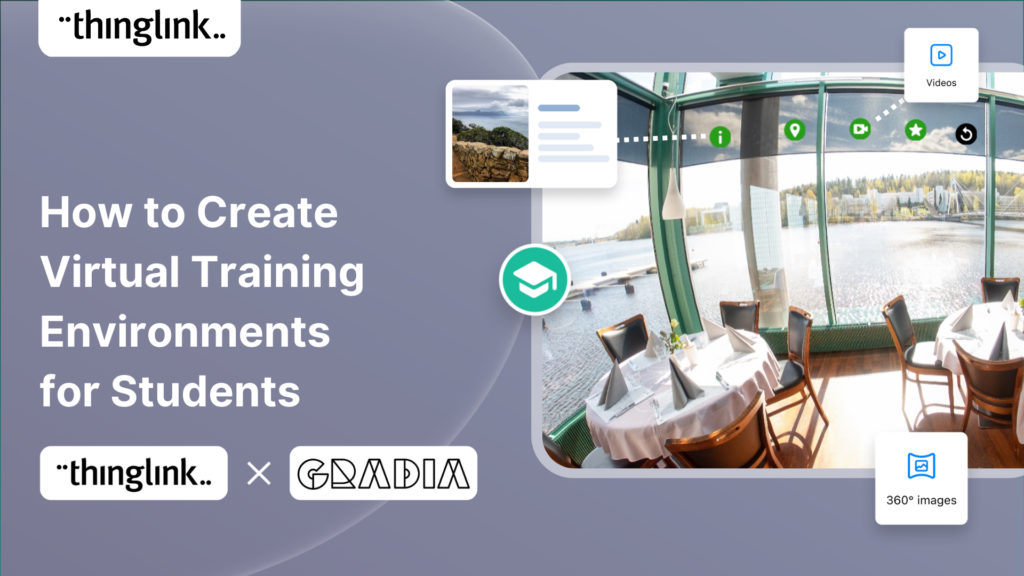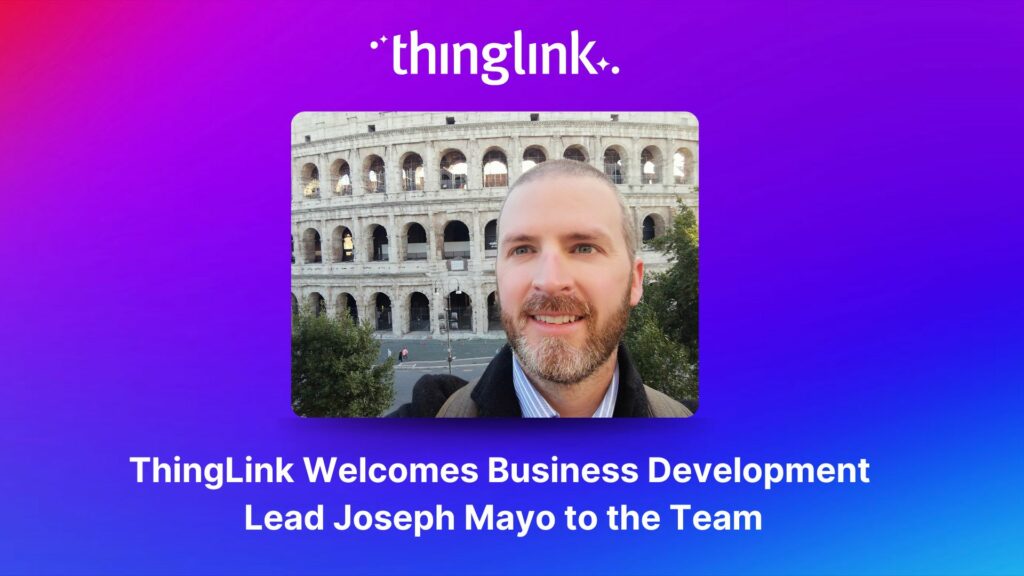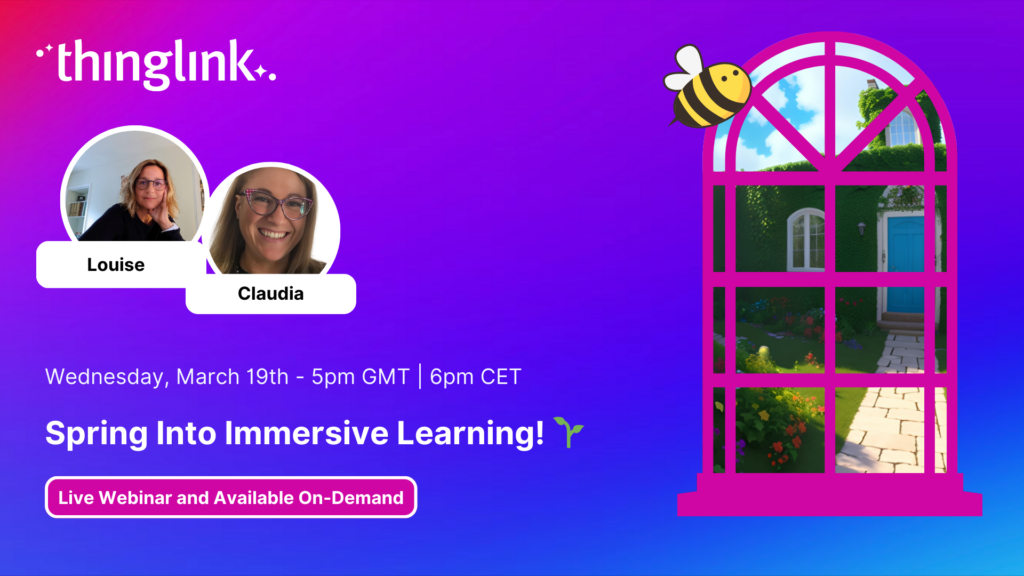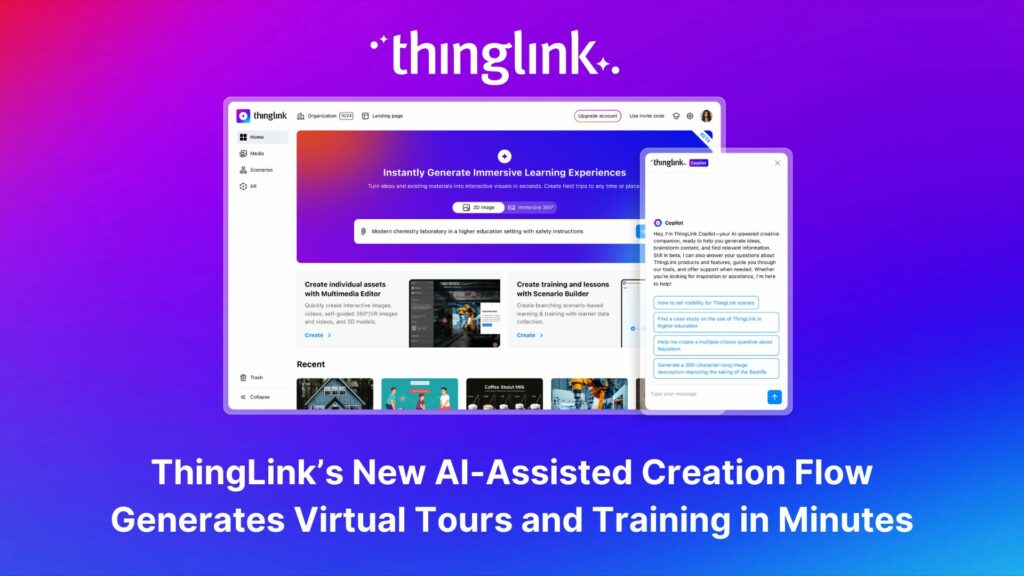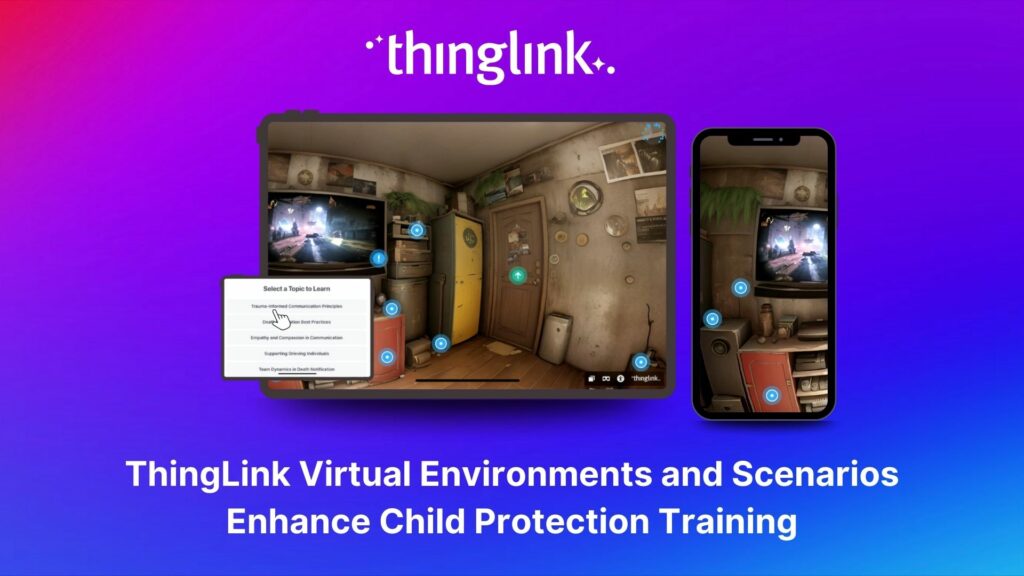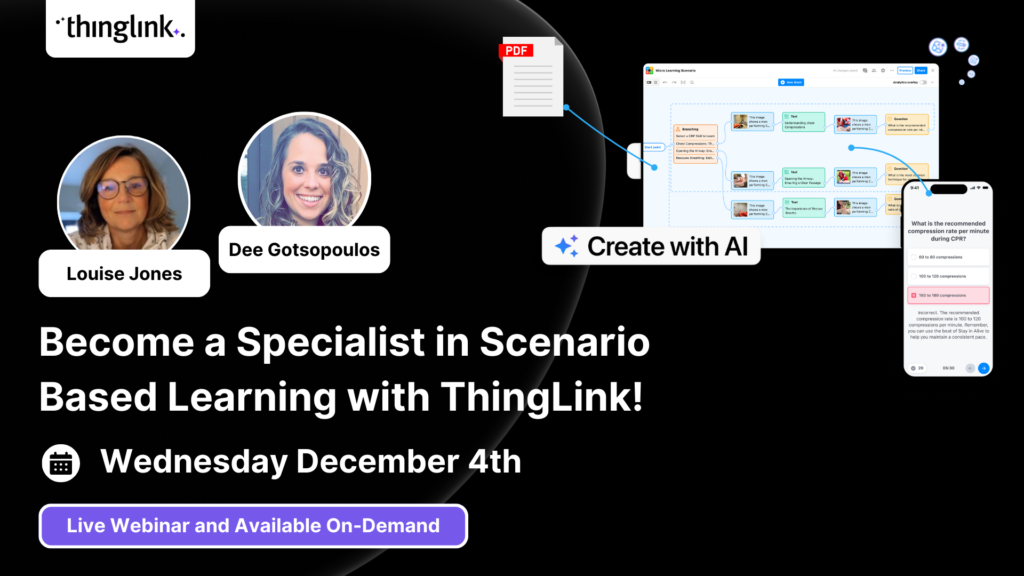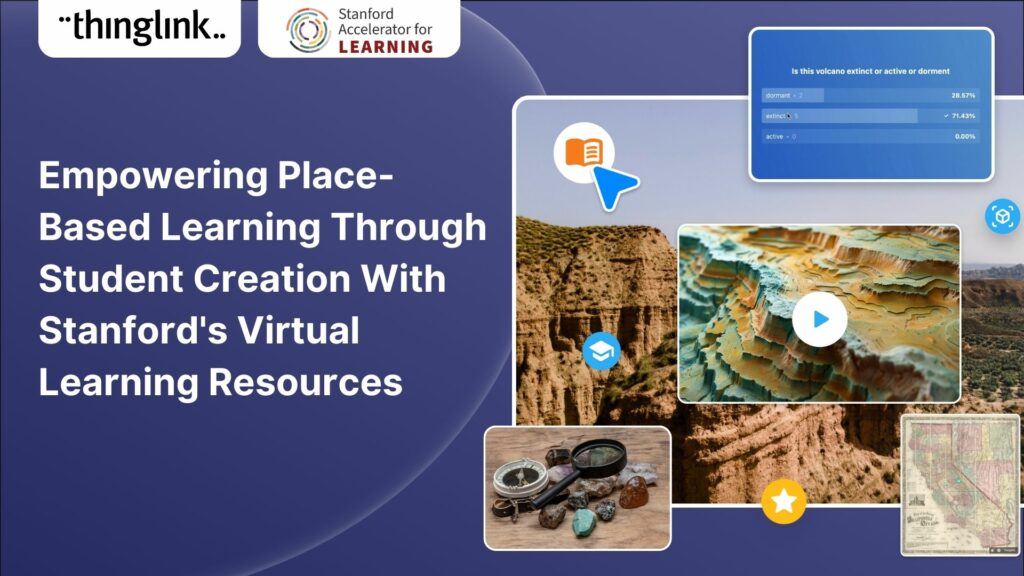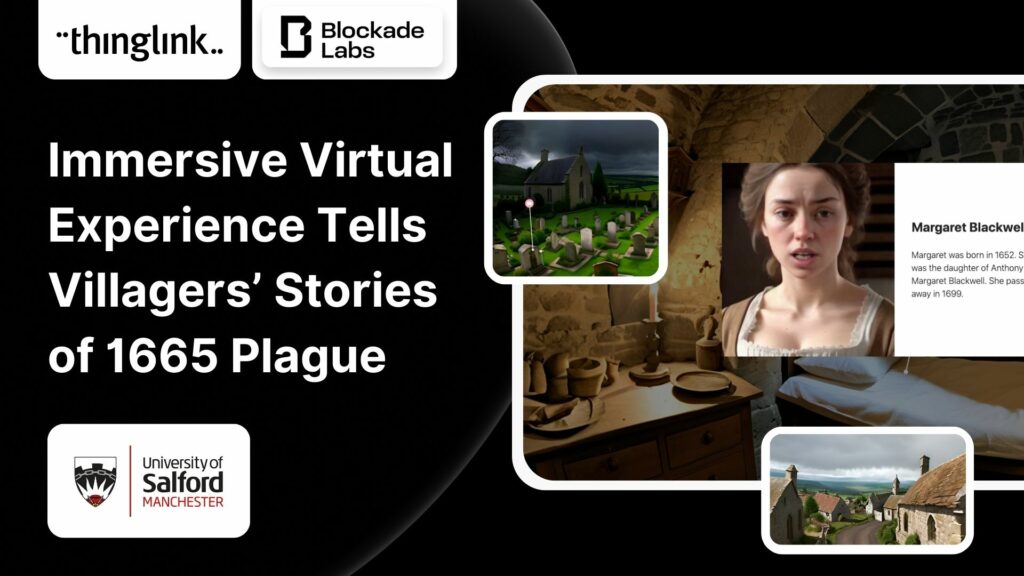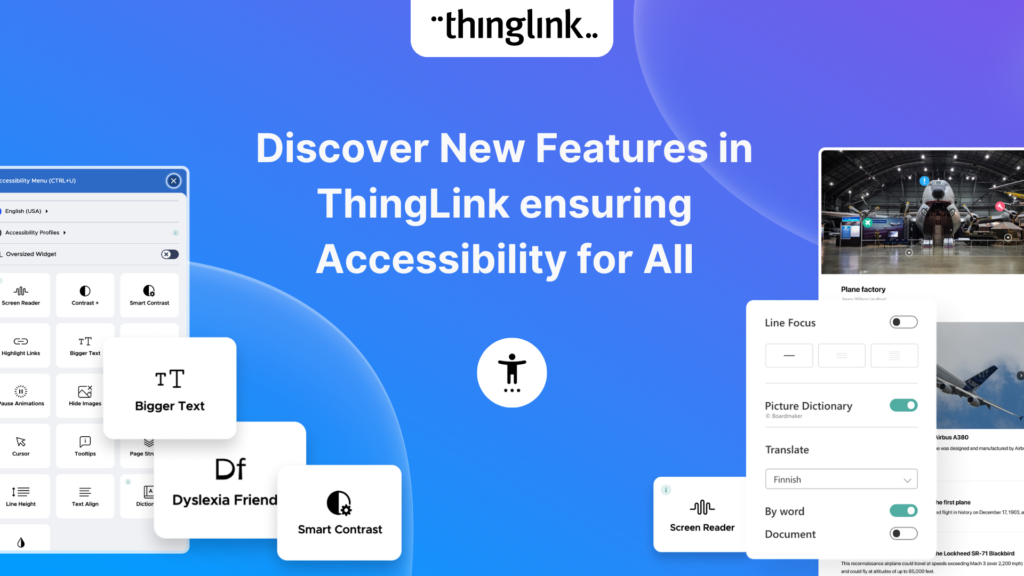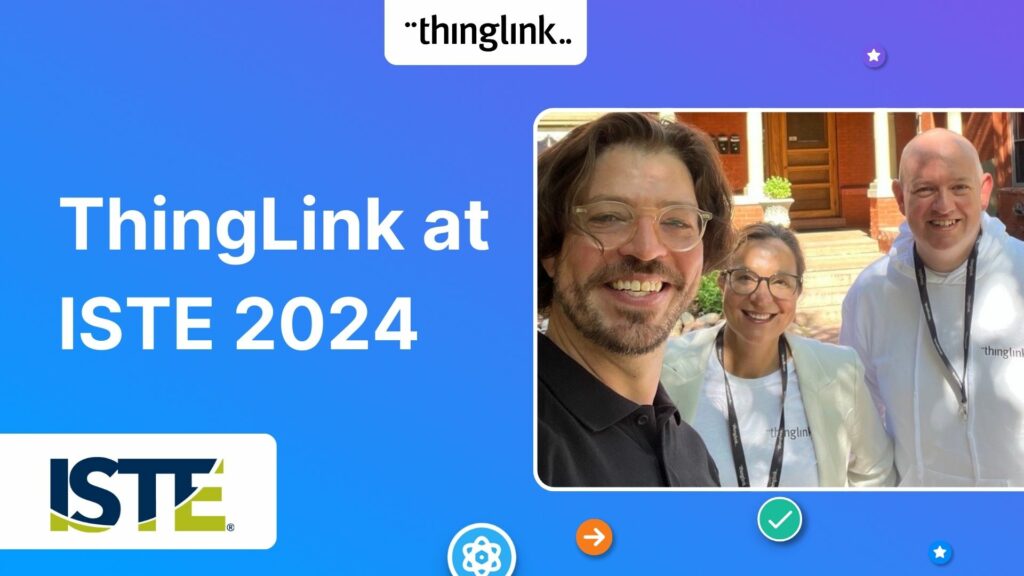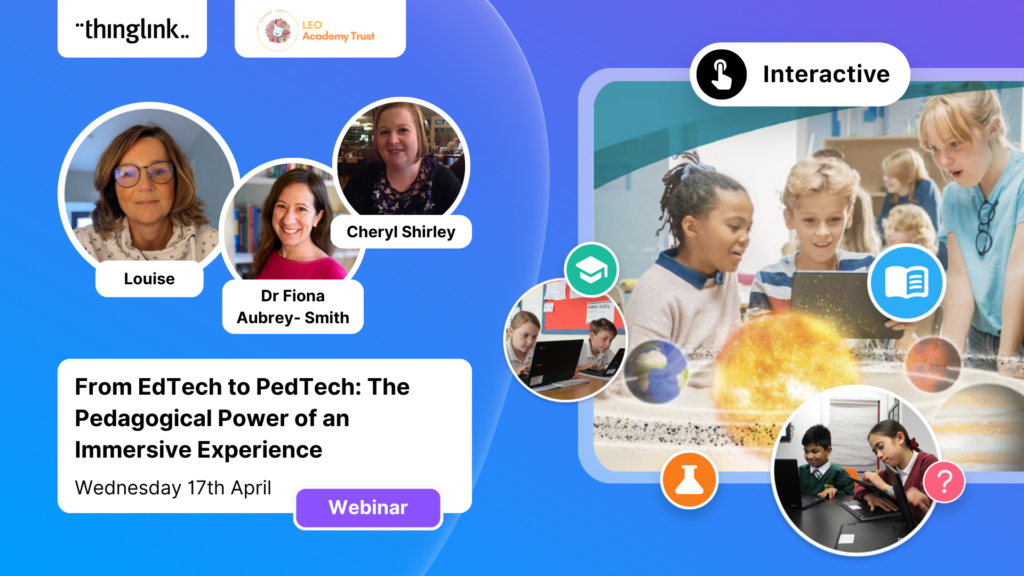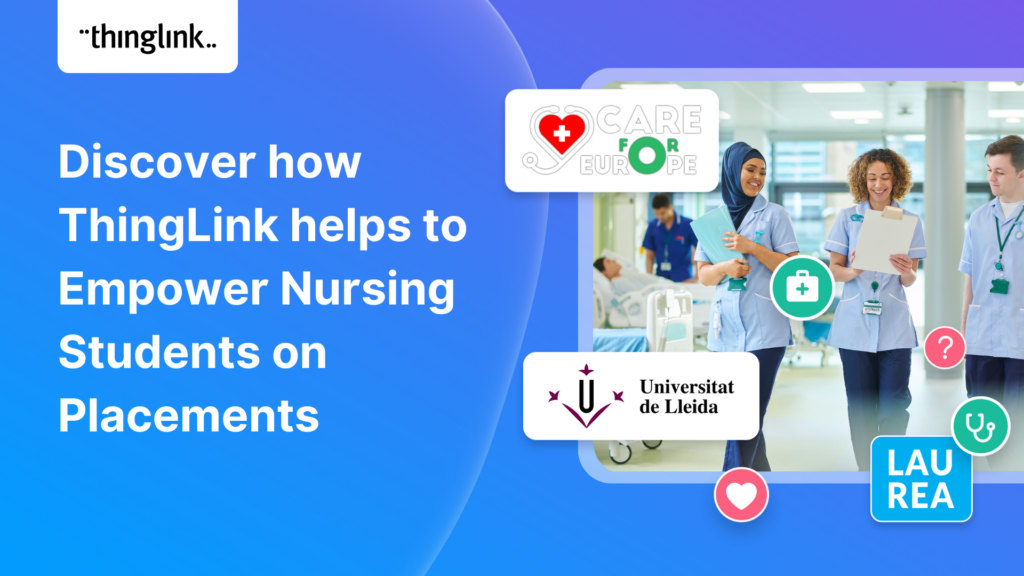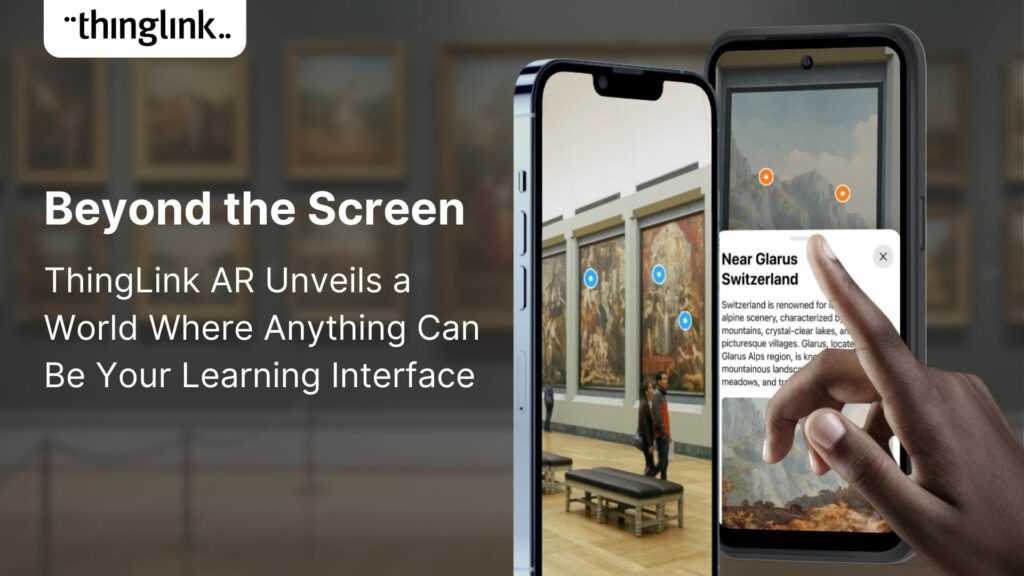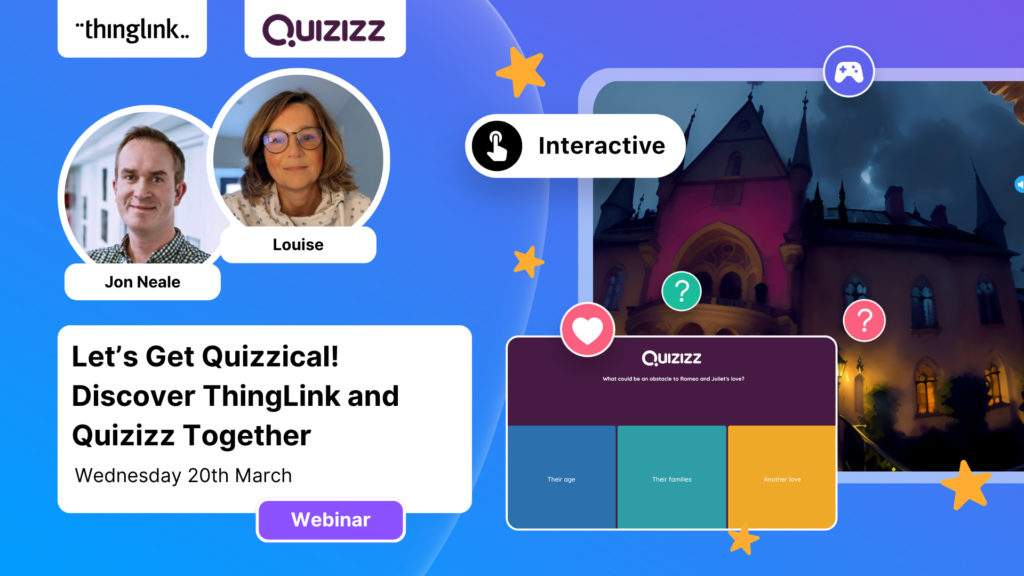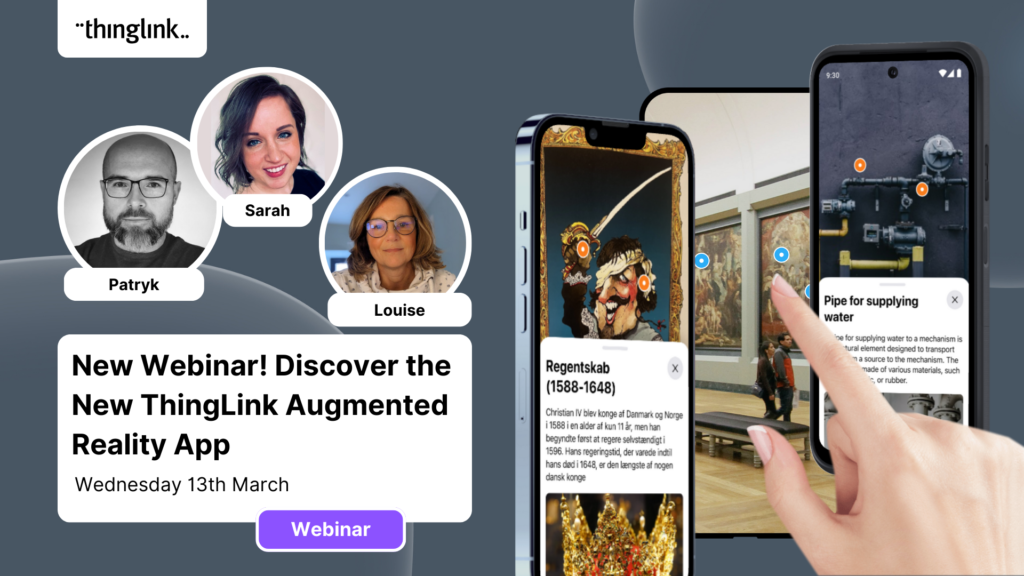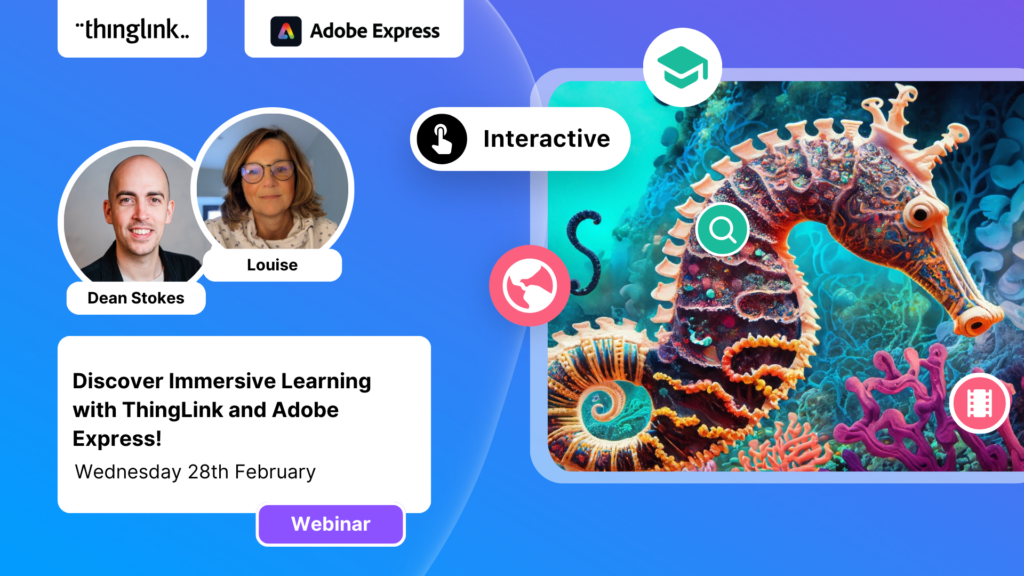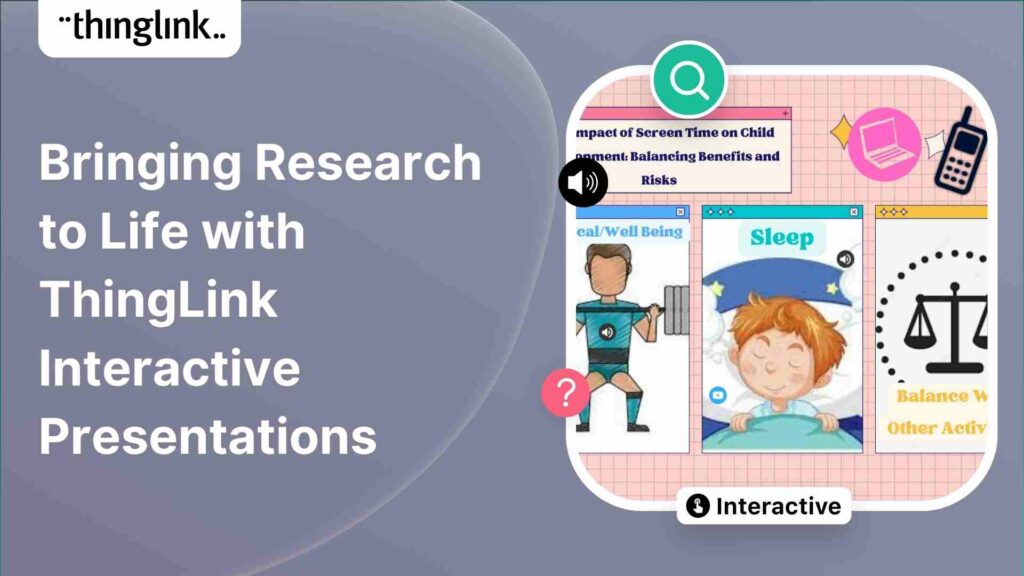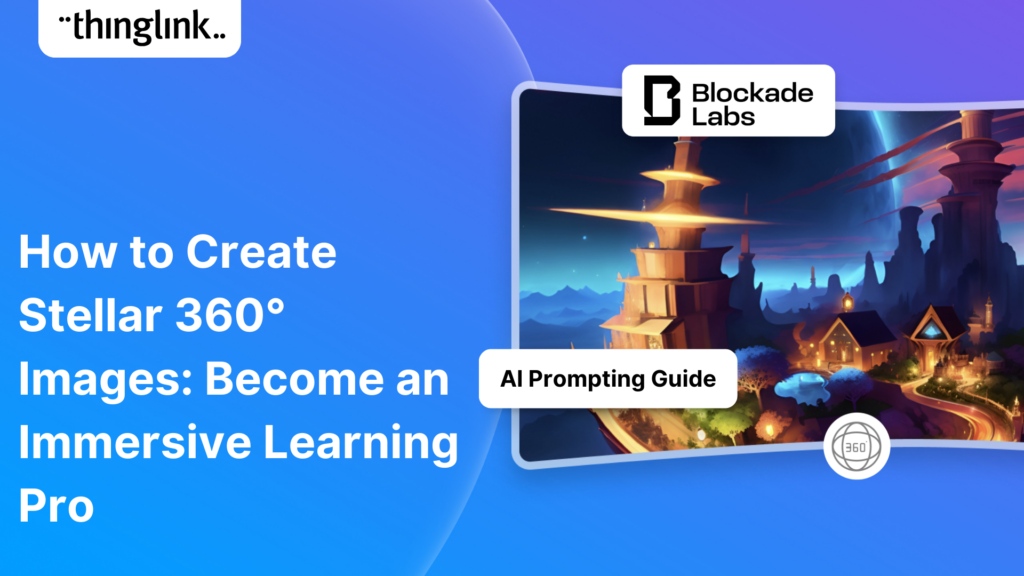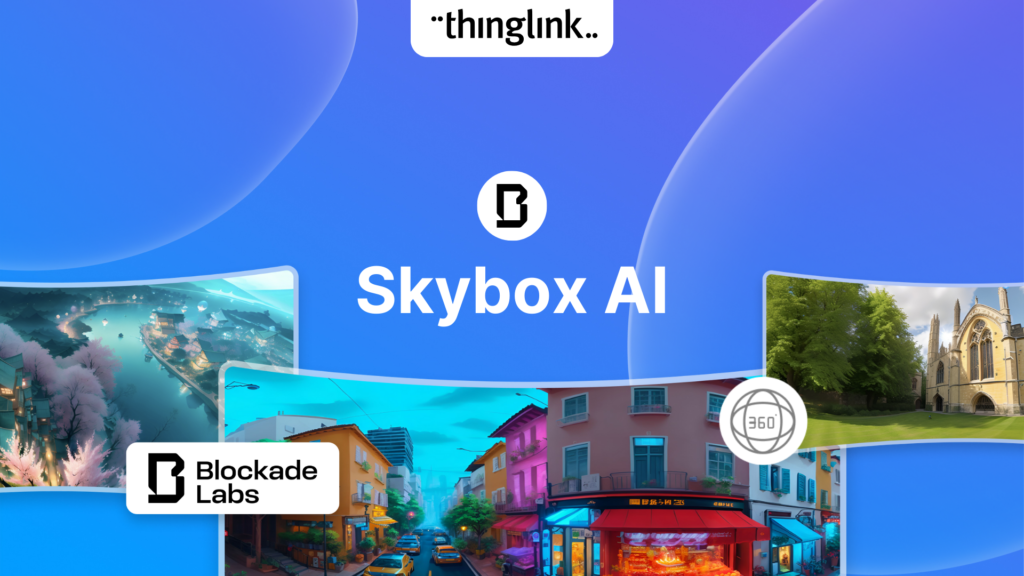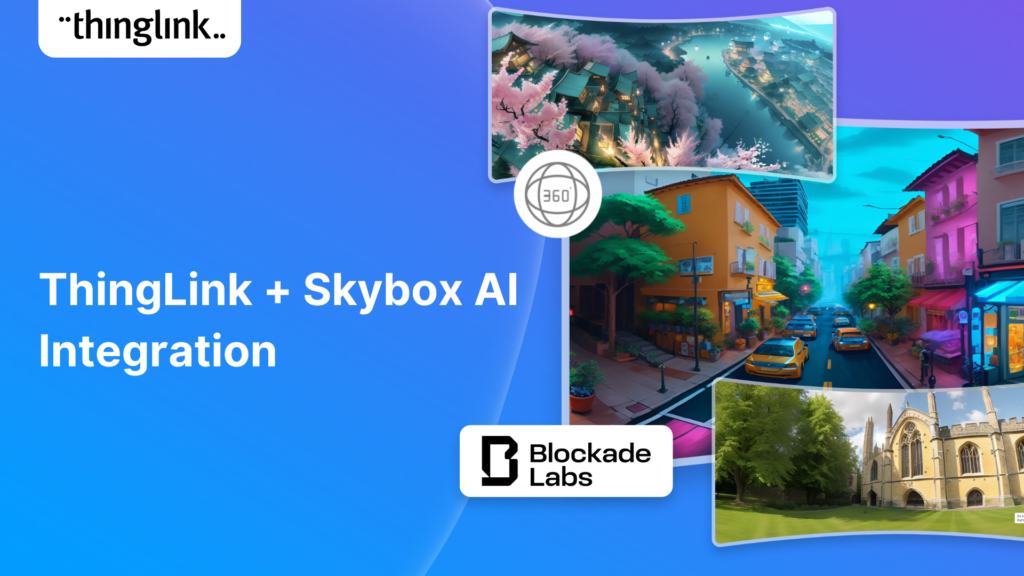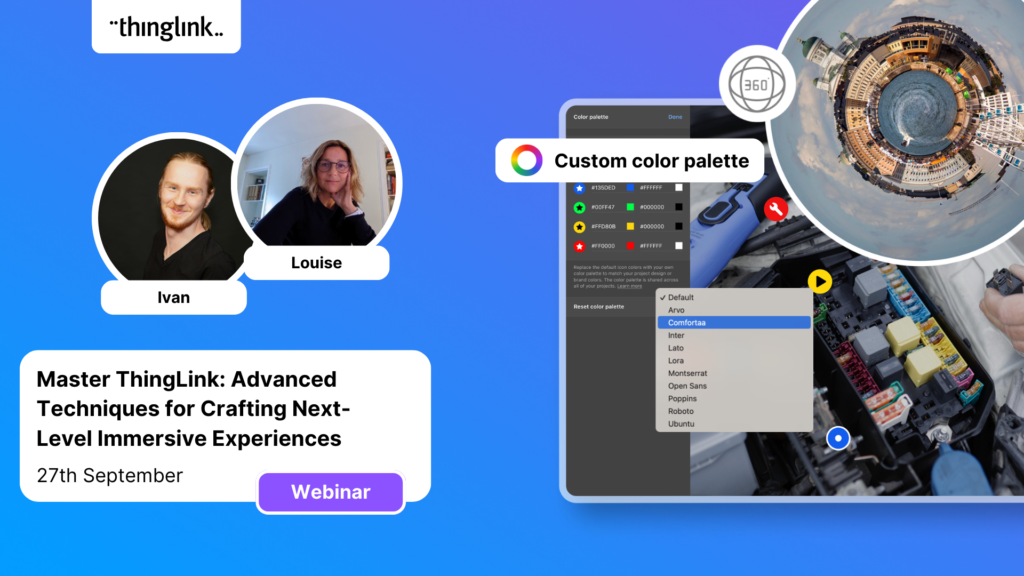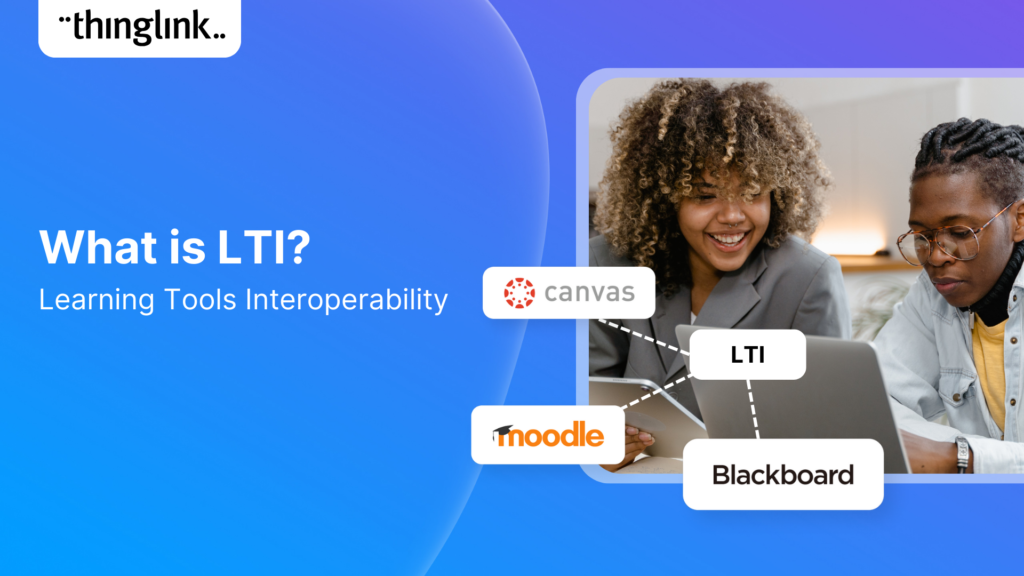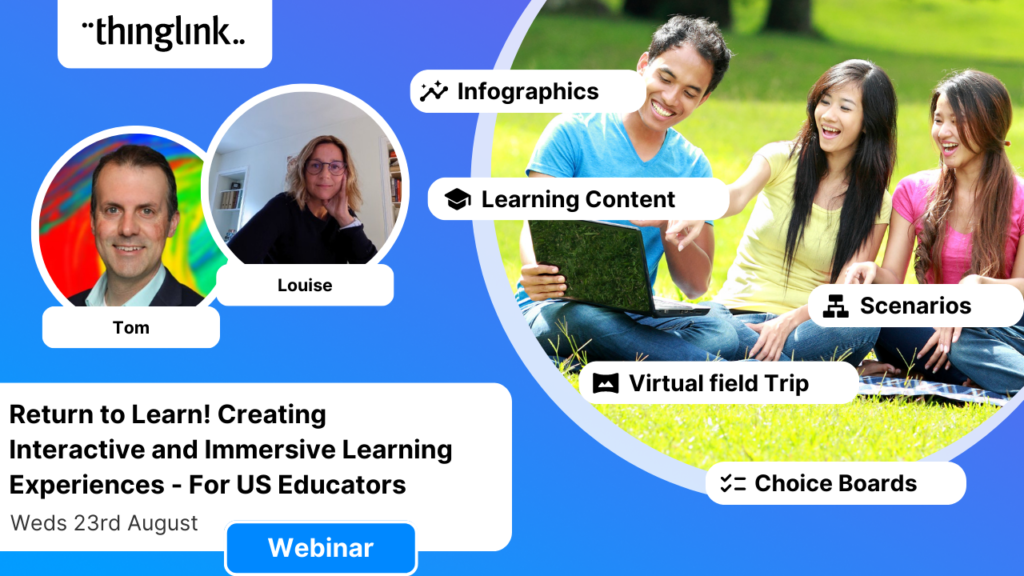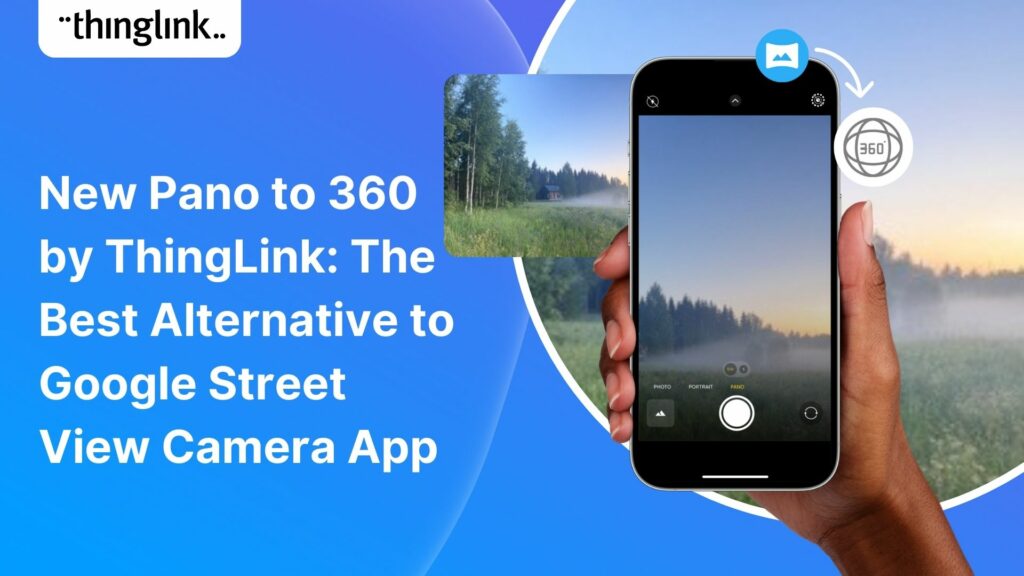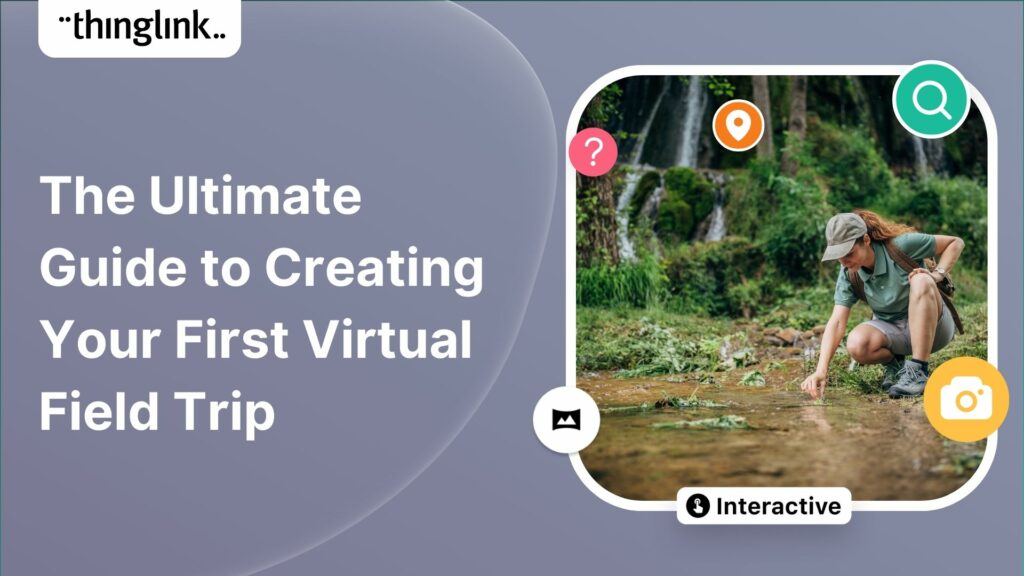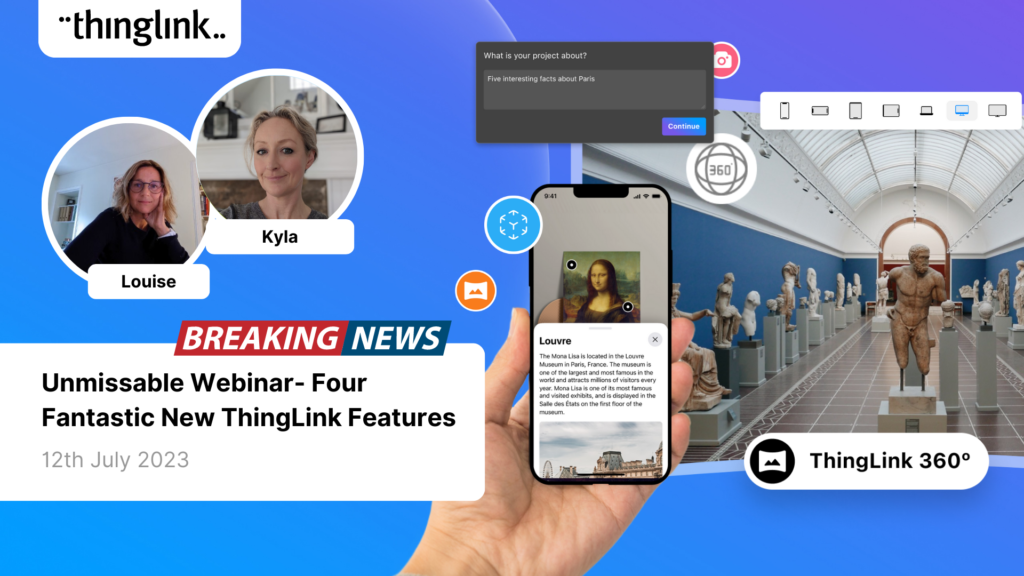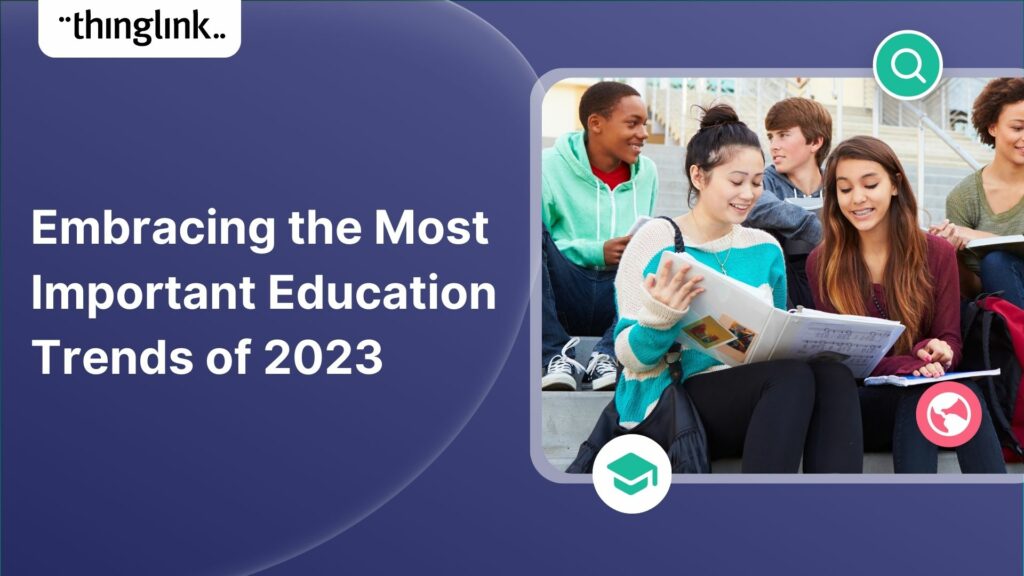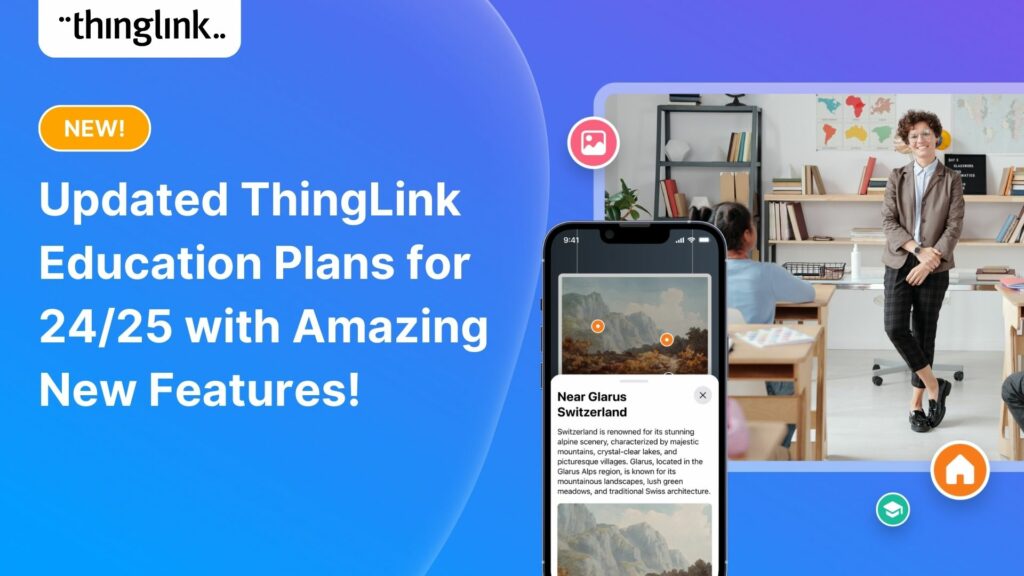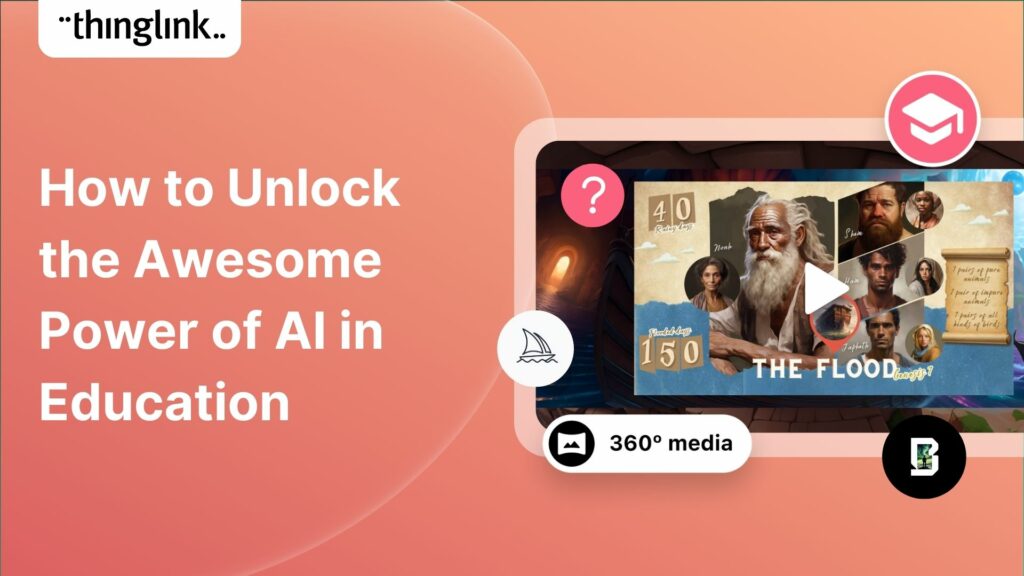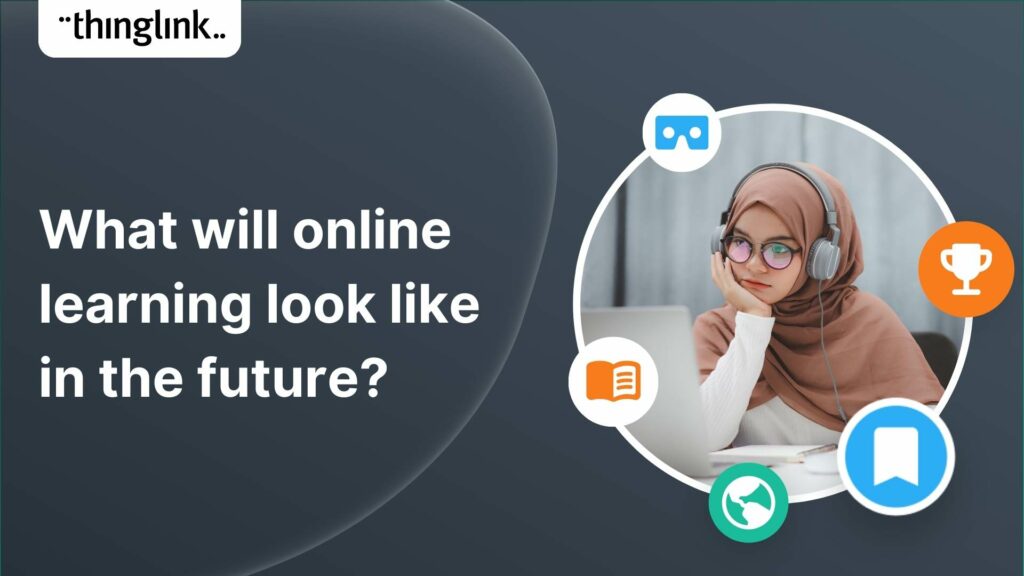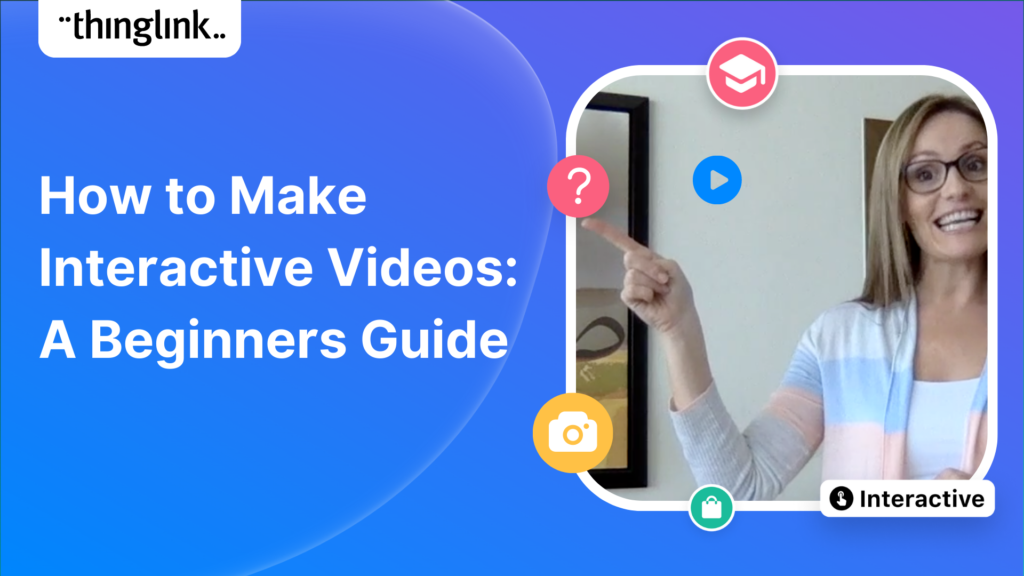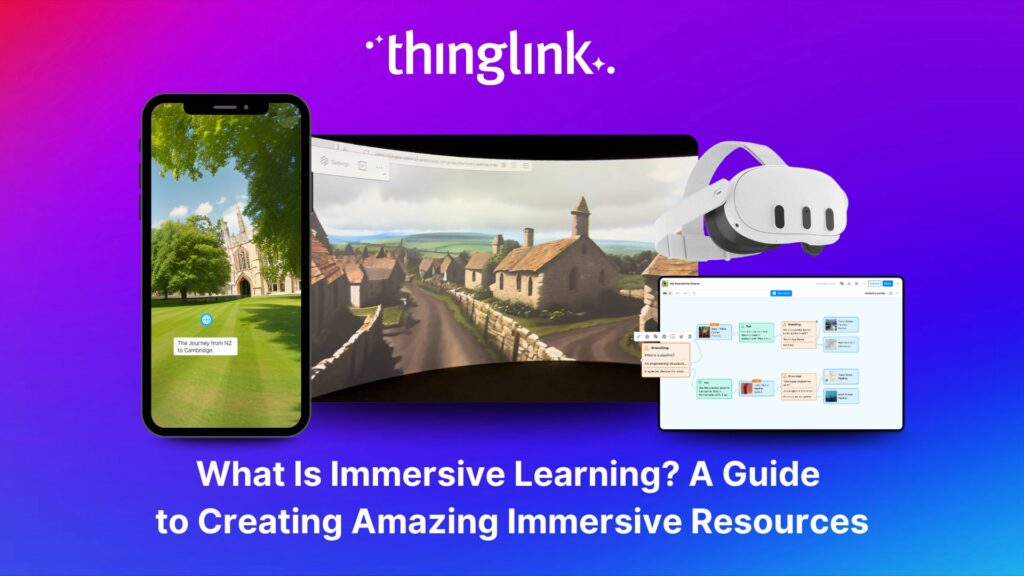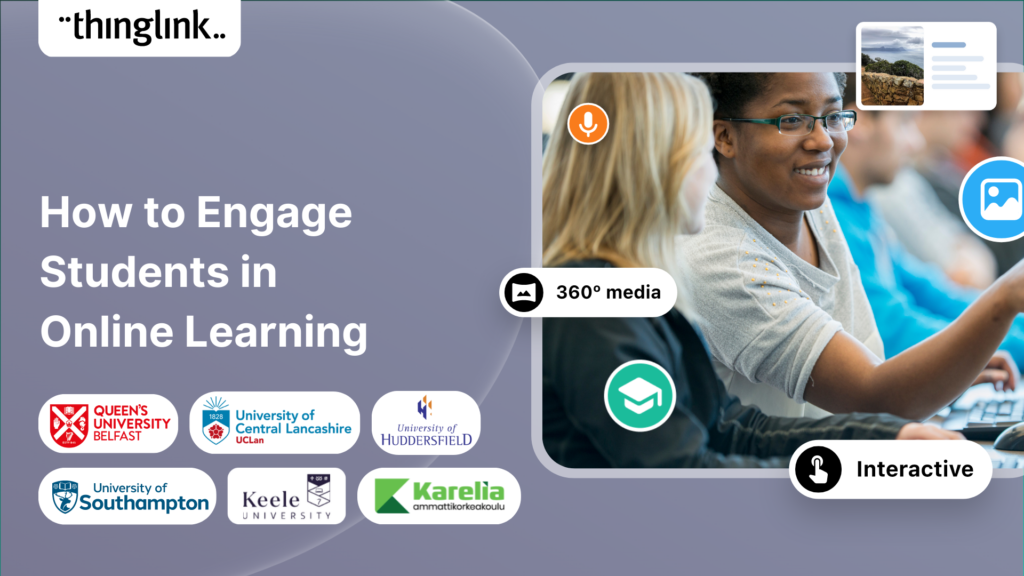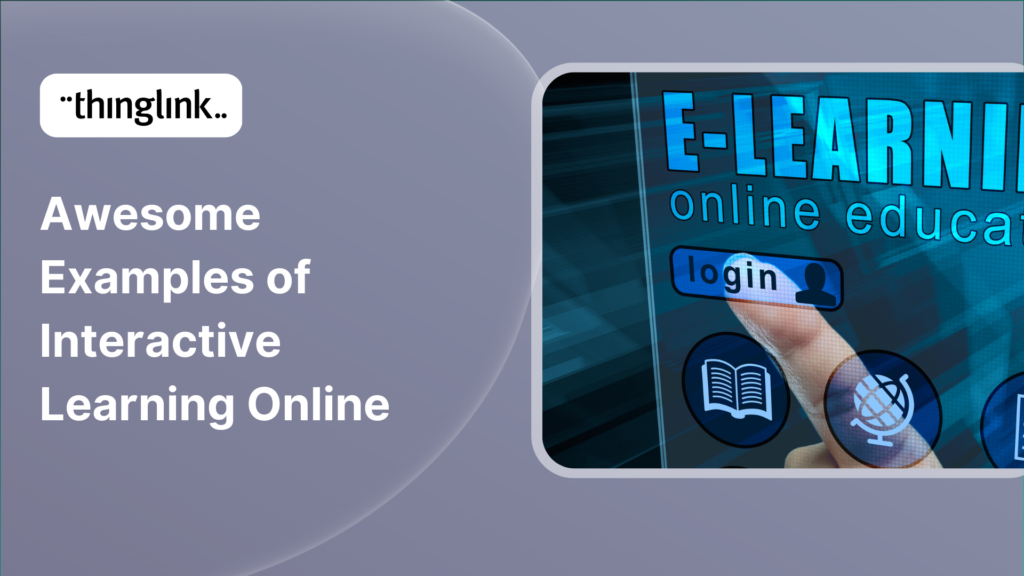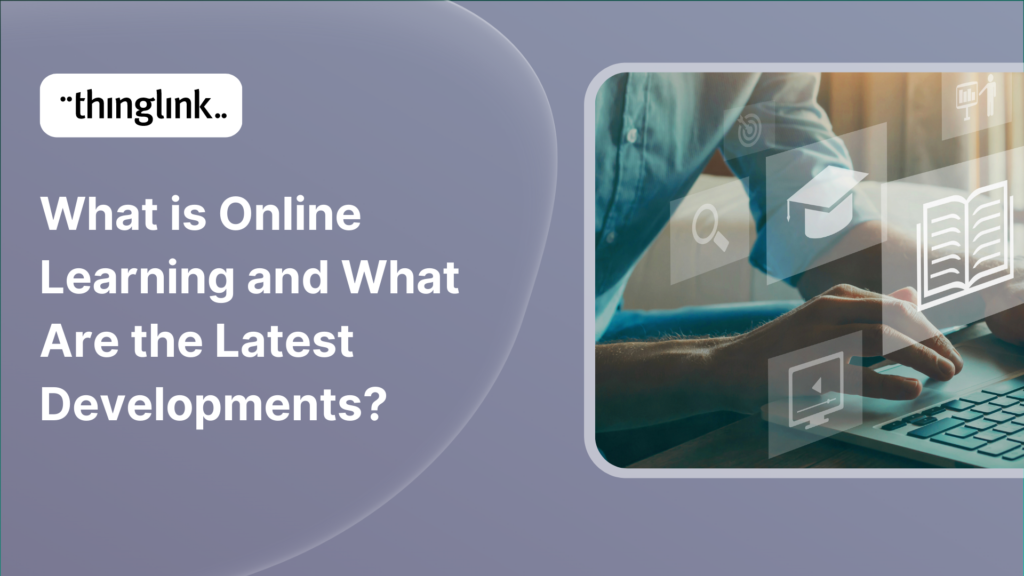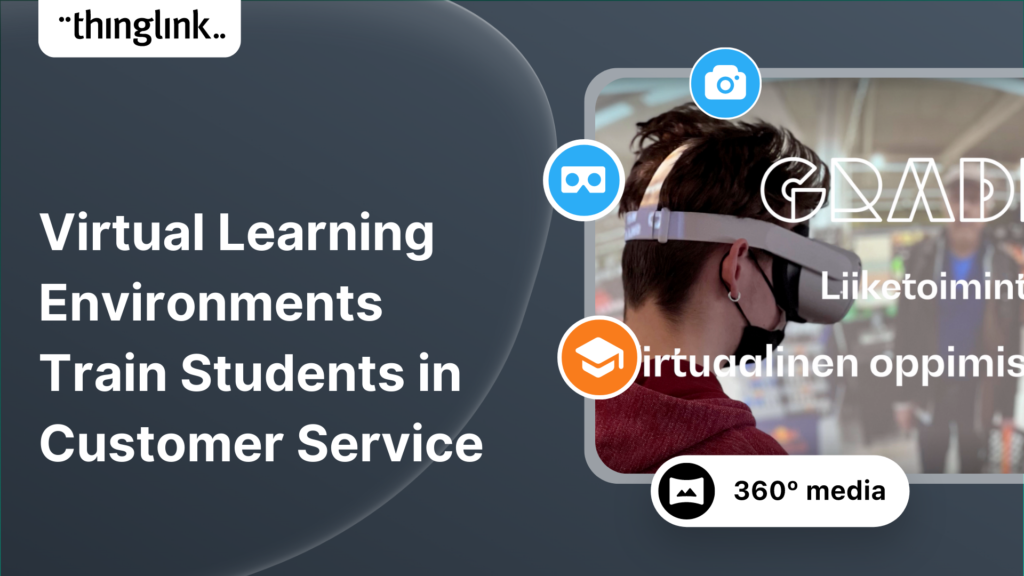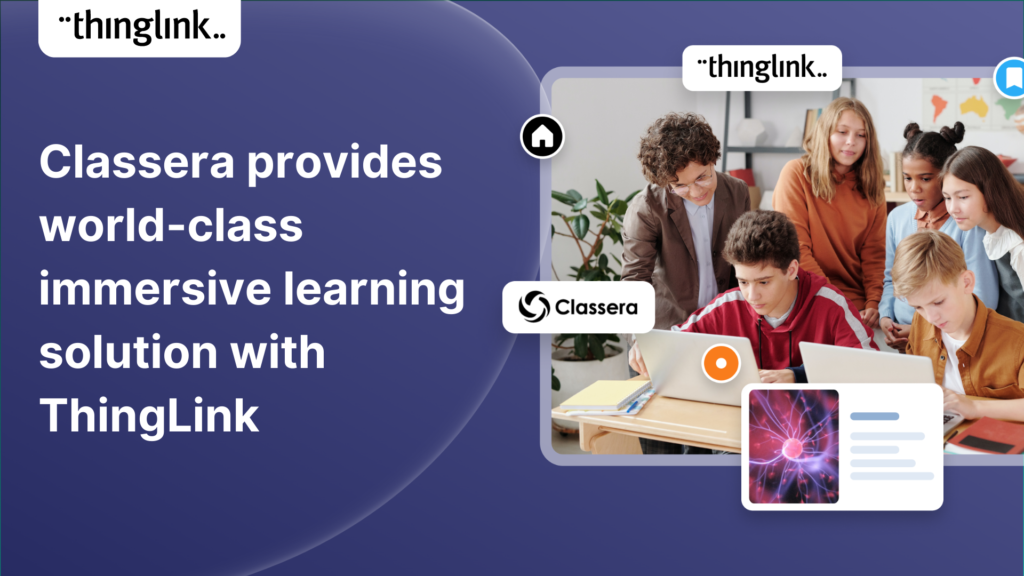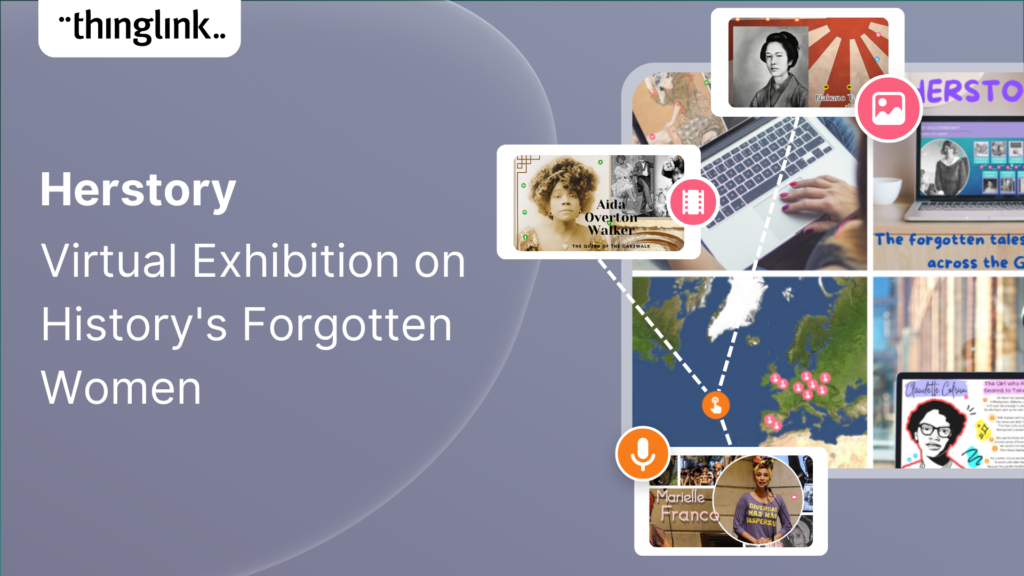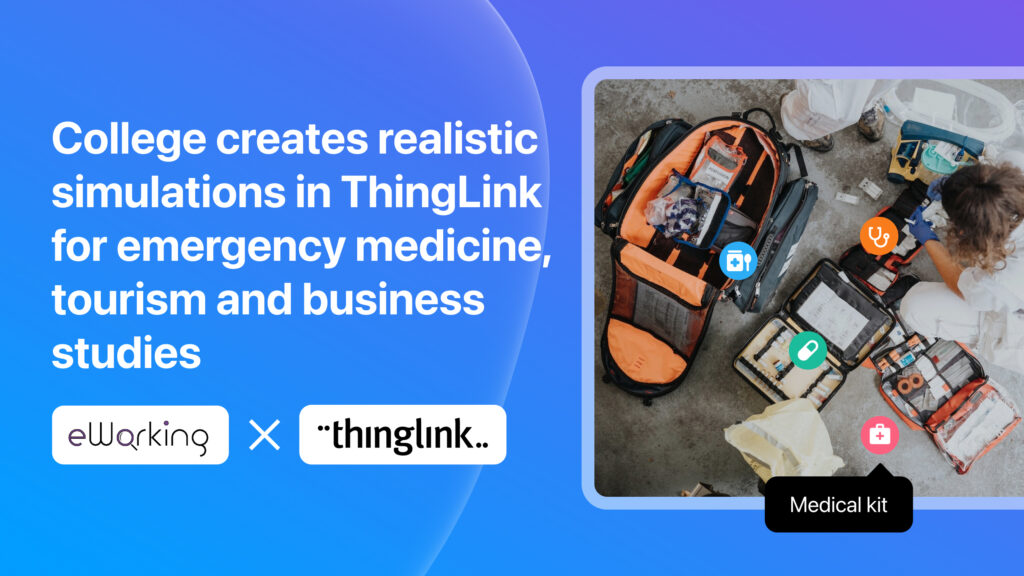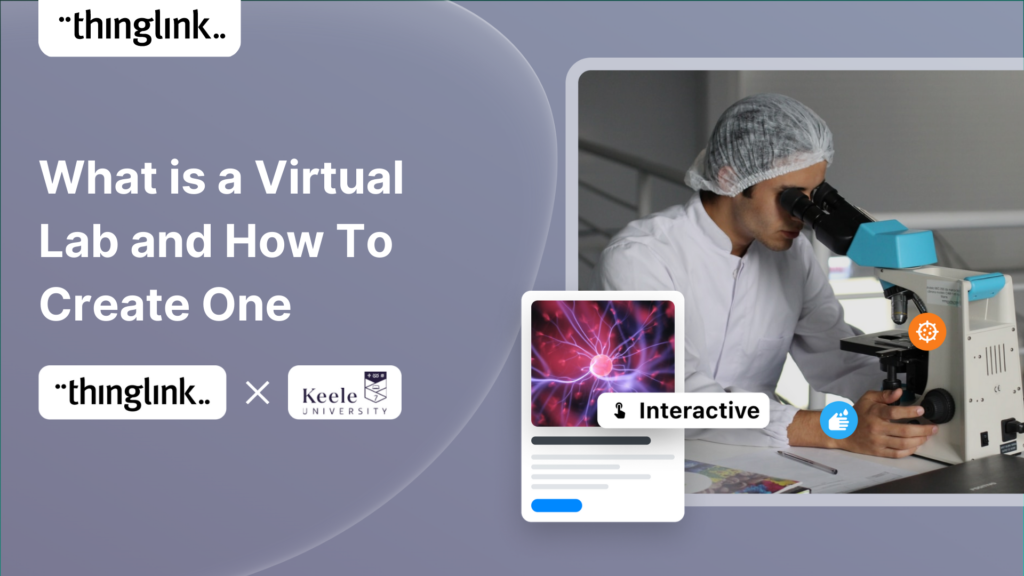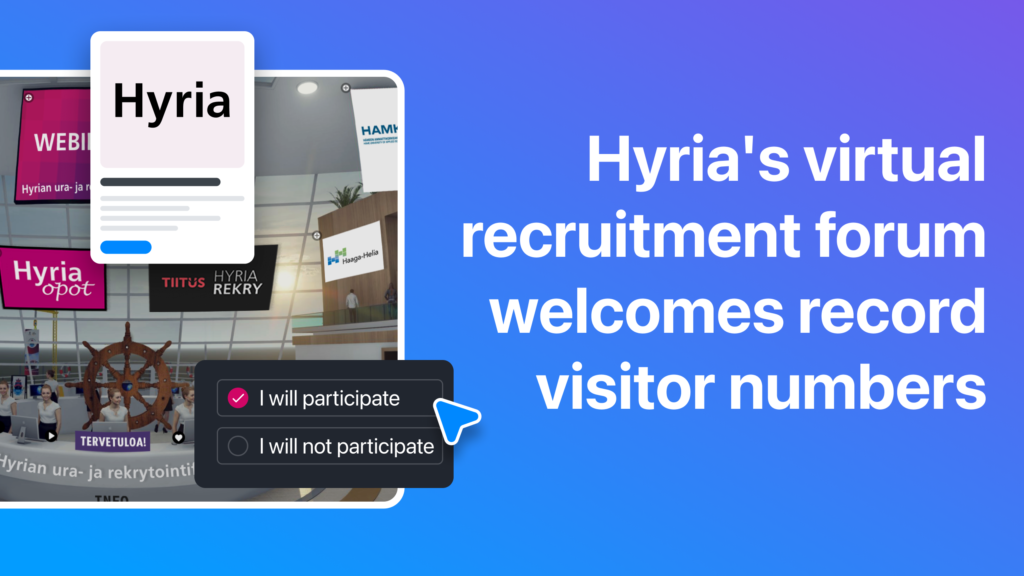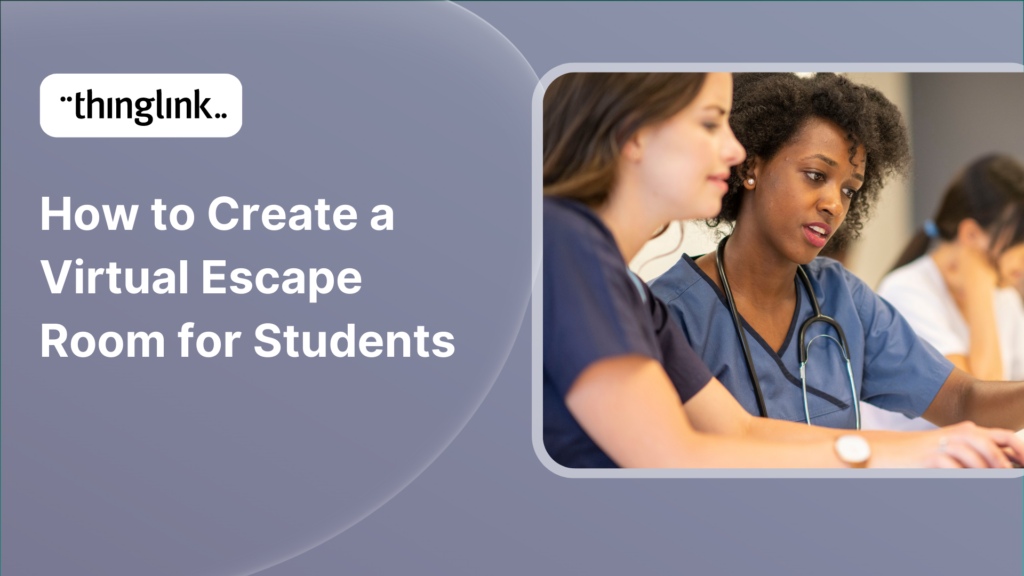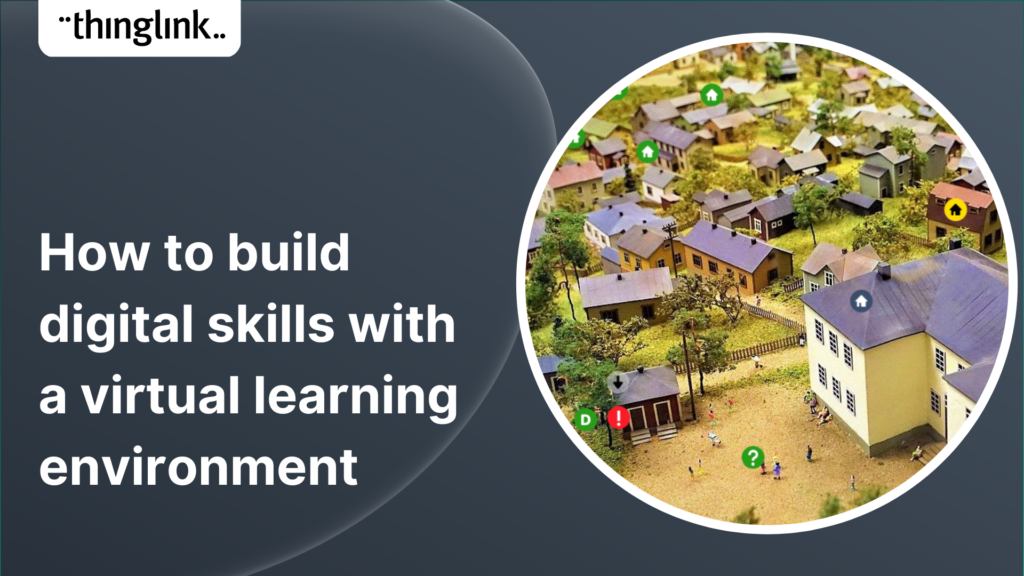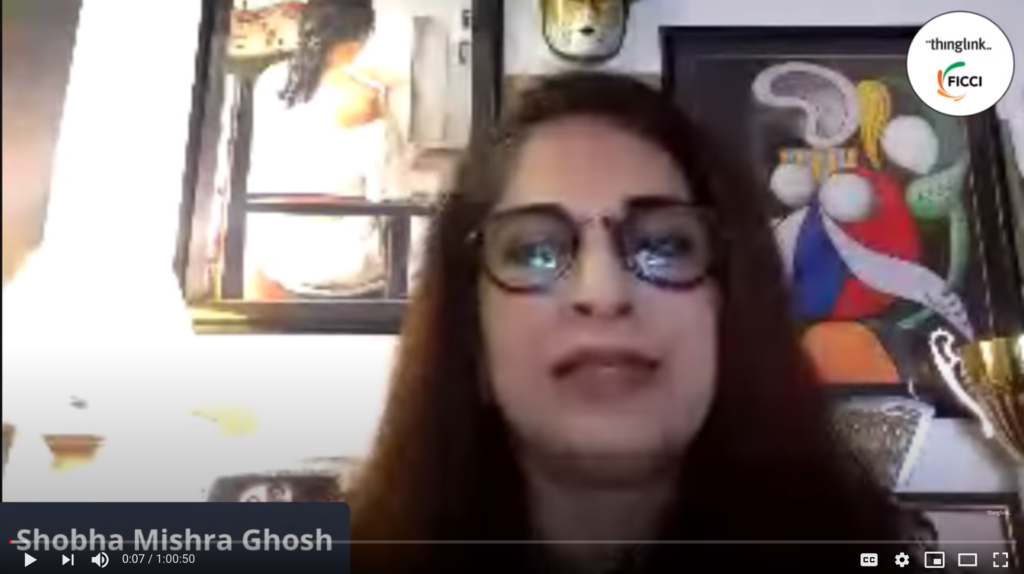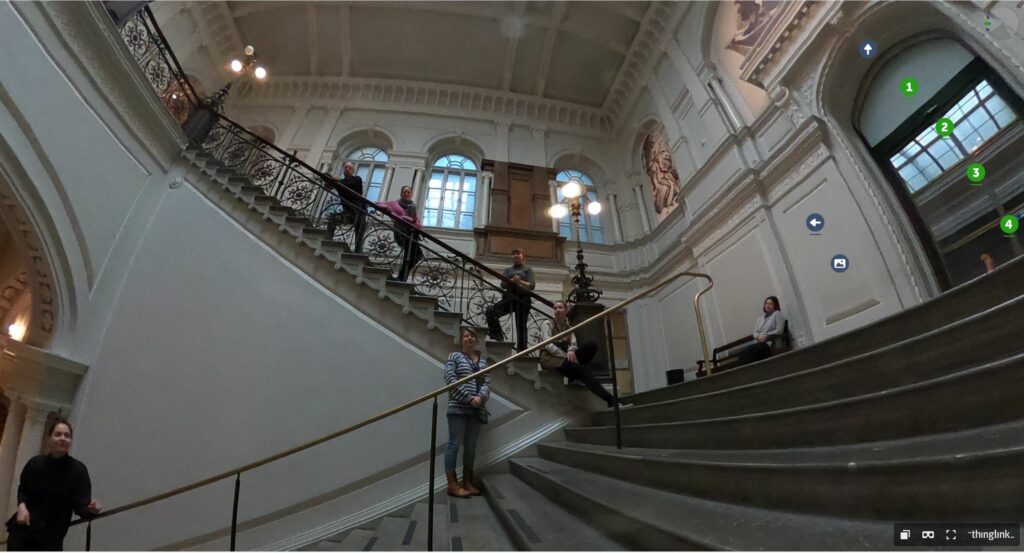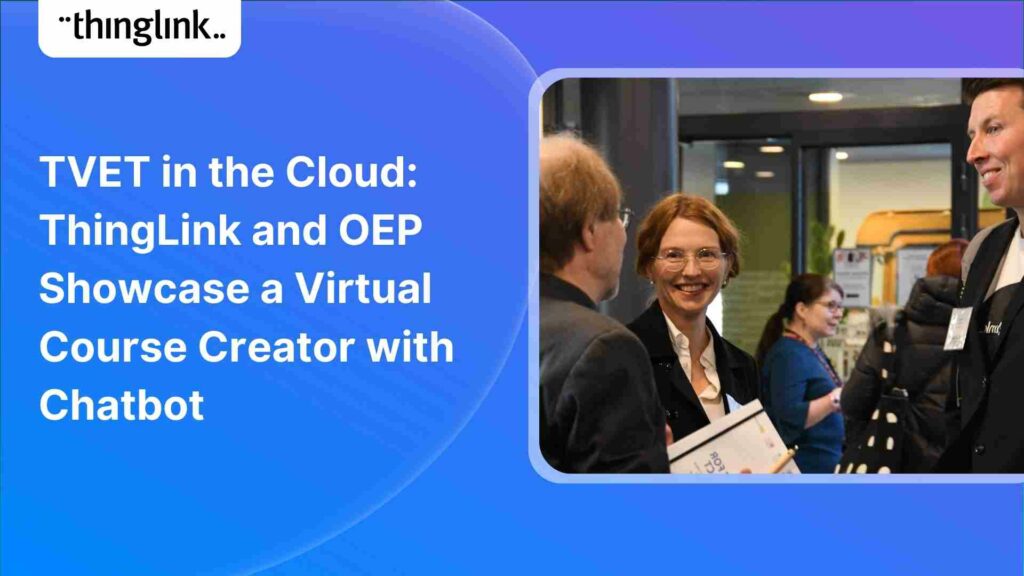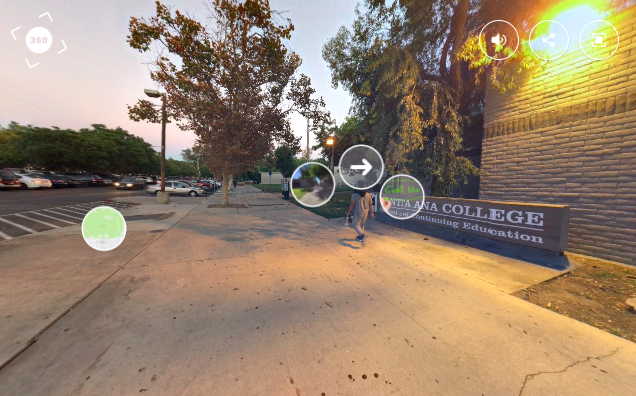Louise Conway, Information Manager at the University of Hertfordshire (UK) has created an ingenious, engaging virtual escape room to ensure that new students are...
 Kyla Ball
7 min read
Kyla Ball
7 min read
ThingLink, the AI-assisted immersive content creation platform for training and education, continues to grow its global team alongside the expansion and development...
Spring into Immersive Learning! 🌱 Join your hosts Louise and Claudia for a playful and engaging session on the rise of immersive learning! We’ll explore new...
As digital transformation accelerates across industries, the demand for intuitive AI tools that empower non-technical users to create sophisticated learning experiences...
Background Zero Abuse Project (founded in 2018) is a non-profit organization based in the US. Their mission is “To protect children from abuse and sexual assault,...
 Kyla Ball
8 min read
Kyla Ball
8 min read
Are you ready to move beyond the classroom and explore the world of Learning and Development (L&D)? Join us for an exciting free webinar featuring two esteemed...
Join us for an exciting exploration of ThingLink’s updated Scenario Builder! In this session, we’ll showcase two powerful paths for scenario creation: building...
Education is changing fast, and immersive learning is playing an important role in shaping the future of how we teach and engage students. Watch our exciting...
Discover the New ThingLink Scenario Builder and Ways to Transform the Static to Interactive In Fall 2024, ThingLink revolutionized the world of Scenario Based Learning...
For educators looking to encourage student creation, Stanford University’s essential guide will show you how to use content from real-life Field Trips in ...
 Kyla Ball
7 min read
Kyla Ball
7 min read
Immersive Virtual Experience Tells Villagers’ Stories of 1665 Plague A team at the University of Salford have created an immersive virtual experience of Eyam,...
 Kyla Ball
3 min read
Kyla Ball
3 min read
This post presents the background of how the The Weave RoomTM created an engaging, interactive and polished online training course with ThingLink, which was so ...
It’s that time of year for the FREE annual ‘Return to Learn’ webinar! Join us for an exciting and informative webinar as we present the latest ThingLink updates,...
Creating accessible learning experiences is critical for educators, trainers and student creators, but it need not be daunting! ThingLink is a platform that allows...
Our team is excited to be back at ISTE, and we look forward to reconnecting with old friends and meeting new ones in Denver, Colorado! Here are some topics and ...
In this case study we look at an inspiring example of collaboration between a university and its local community. The university has created a multi-purpose interactive...
 Kyla Ball
6 min read
Kyla Ball
6 min read
Are you an educator, instructional designer, or higher education professional seeking innovative ways to engage your students? Our upcoming webinar, “Discover...
Sabine Römer and Sarah Görlich are part of the e-learning department at the Ruhr University in Bochum, Germany. Together, they form a dynamic partnership that...
Now On-Demand! ThingLink is absolutely thrilled to present an exclusive webinar titled “From EdTech to PedTech: The Pedagogical Power of an Immersive Experience.”...
Discover the future of nursing education with the “Care for Europe” project, where immersive tours and interactive modules seamlessly prepare students...
💡 ThingLink Launches their AR Solution: Augmented Reality Simplified for All 📱 Breathe life into the ordinary with ThingLink’s brand new Augmented Reality...
We are delighted to invite you to our webinar! ThingLink Host Louise Jones welcomed special guest star Jon Neale from Quizizz for a fun discussion and live demonstration...
Discover the new ThingLink Augmented Reality App! In this exclusive free webinar Louise from ThingLink is joined by Special Guests Patryk Wójtowicz, Savonia University...
What a webinar! “Discover Immersive Learning with ThingLink and Adobe Express,” draws upon insights from the recent BETT Education Technology Show. ...
Regardless of subject, presenting your data and findings in an engaging and understandable way can be a challenge! Fortunately, ThingLink provides you with the ...
 Kyla Ball
4 min read
Kyla Ball
4 min read
Unlock the Secrets to Crafting Mesmerizing 360° Visuals for a Game-Changing Learning Experience! The future of immersive learning is not just about consuming content—it’s...
Unleash imagination to design unique environments inspired by literature, mythology, historical periods, and more. With Skybox AI and ThingLink, you’re not...
ThingLink, an award-winning immersive learning technology platform is announcing a strategic partnership with Blockade Labs, creators of Skybox AI, an innovative...
On-Demand Webinar on Advanced Features of ThingLink! Master ThingLink: Advanced Techniques for Crafting Next-Level Immersive Experiences The future of learning ...
This article provides an overview of integrating ThingLink into Canvas courses using the Learning Tools Interoperability (LTI) 1.3 standard. This integration allows...
This article provides an overview of integrating ThingLink into Moodle courses using the Learning Tools Interoperability (LTI) 1.3 standard. This integration allows...
Learning Tools Interoperability (LTI) is a widely-adopted industry standard in the fields of education and corporate learning and development. It was developed ...
Our webinar for US Educators with Special Guest Host Tom Mullaney. It was absolutely fabulous! Dive Deep into the World of Immersive and Interactive Learning with...
Dive into a universe of detail with Pano to 360: no more multiple shots, just easy, fully immersive 360 photospheres! Since Google decided to retire the beloved...
Ever since Google discontinued its much-loved Street View Camera App, users around the world have been searching for a worthy alternative. The good news? Your search...
Virtual field trips are an ideal way to immerse learners in real world environments without ever leaving the classroom, lab or lecture theatre. There are a number...
 Kyla Ball
6 min read
Kyla Ball
6 min read
ThingLink has been a leader in learning technologies, consistently seeking innovative ways to stay ahead of the curve. Not only are we bringing you new ways to ...
In 2023, we have already seen significant developments that will continue to transform teaching, learning, education technology and the education industry as we...
 Kyla Ball
4 min read
Kyla Ball
4 min read
Your school or organization can now have access to our much-loved multimedia editor, ThingLink Scenario Builder 2.0 with learner assessment capture in your LMS,...
Learners can create truly extraordinary content when they use and combine the latest AI tools for image generation. In this case study we demonstrate and celebrate...
 Kyla Ball
7 min read
Kyla Ball
7 min read
In all areas of education, learning and training, online learning is expected to continue evolving and growing, following its fast expansion over the early part...
 Kyla Ball
4 min read
Kyla Ball
4 min read
In this blog we look at how you can use interactive videos – either as a training or educational tool for your learners, or for marketing or ecommerce purposes....
 Kyla Ball
4 min read
Kyla Ball
4 min read
In this blog we have put together a little toolbox of 7 creative thinking skills to help you boost creativity in your everyday life and work. It’s a common misconception...
 Kyla Ball
4 min read
Kyla Ball
4 min read
What is Immersive Learning? Immersive learning is a modern approach to education and training that aims to create a fully-engaging and experiential environment ...
 Kyla Ball
5 min read
Kyla Ball
5 min read
For many students, the shift to online learning which was accelerated by the pandemic was a major adjustment. And whilst most students now expect that some aspects...
 Kyla Ball
4 min read
Kyla Ball
4 min read
Alongside the overall growth of e-learning, distance learning and blended learning, Virtual Learning Environments or VLEs have become increasingly popular in all...
 Kyla Ball
4 min read
Kyla Ball
4 min read
The Benefits of Interactive Learning Online Online learning or e-learning has become an integral part of education systems worldwide, from elementary school all...
 Kyla Ball
3 min read
Kyla Ball
3 min read
Online learning has become increasingly widespread in the higher education sphere over the past decade. It is a great way for students to access courses and programs...
 Kyla Ball
4 min read
Kyla Ball
4 min read
Our final post of 2022, from the University of Southampton is a fitting example to round off the year. The Centre for Higher Education Practice’s Advent Calendar...
Gradia Vocational School has created new learning course content for the business education sector, using 360 video simulation technology in ThingLink. The elearning...
 Matias
3 min read
Matias
3 min read
This case study was written by Tim Cappelli, Lead for Technology Enhanced Learning and Hayley Hewitt, Instructional Designer, both from the University of Huddersfield....
 Kyla Ball
11 min read
Kyla Ball
11 min read
ThingLink and global learning super platform Classera are today announcing they have developed a technical integration to offer educators a simple solution for ...
In this blog we look at how students from UCLan created a virtual exhibition about history’s forgotten women, the process they used to create it and the results...
 Kyla Ball
4 min read
Kyla Ball
4 min read
Our Best Pricing Offers to Date! We’ve listened to educators who said they wanted to enable students and staff to create with ThingLink but were limited by...
At Samiedu Vocational College in Finland, teachers and employers jointly created highly effective training programs with ThingLink which have increased students’...
 Kyla Ball
7 min read
Kyla Ball
7 min read
ThingLink Virtual Labs help address accessibility and inclusivity challenges for science students Many ThingLink creators in the Higher Education sector have carried...
Are you looking for a way for your students to find out about job opportunities, learn about education options and get feedback on their CVs? When they couldn’t...
 Kyla Ball
7 min read
Kyla Ball
7 min read
The medical school at the University of Central Lancashire (UCLan) uses real-life escape rooms to recreate typical time-critical emergencies for students. They ...
 Kyla Ball
7 min read
Kyla Ball
7 min read
In this case study we examine how a Finnish University used ThingLink to create a virtual learning environment (VLE) where home care professional could practice...
 Kyla Ball
8 min read
Kyla Ball
8 min read
During the COVID-19 pandemic, physical school visits could not be arranged. At Samiedu Vocational College in Eastern Finland, school visits and recreational visits...
 Kyla Ball
5 min read
Kyla Ball
5 min read
We are delighted to present the second of our video series covering specifically the teaching methods underpinning uses of interactive media in technical, vocational,...
Prior to the Covid-19 pandemic, educational institutions relied heavily on in-person visits to attract new admissions for the following school year. With limits...
A youth-adult fellowship used online graphic design platform Canva when creating a highly impactful thinglink to showcase video testimonials. This memorable and...
 Kyla Ball
5 min read
Kyla Ball
5 min read
Almost every organization offers courses to students, staff or lifelong learners via their chosen Learning Management System. This article shows how you can improve...
Some university courses can move online easily, but how do you engage your online students in hands-on subjects involving machinery, materials and complex construction,...
 Kyla Ball
5 min read
Kyla Ball
5 min read
ThingLink and Claned, two Finnish education technology companies operating in the global online learning space, announce a commercial partnership through which ...
An historic institution looks to the future Florida A&M University in Tallahassee FL was founded in 1887, and is the highest-ranked of the public HBCUs (Historically...
 Kyla Ball
4 min read
Kyla Ball
4 min read
In this case study we look at how the University of Southampton used ThingLink to create virtual tours of field sites for their learners to better prepare them ...
 Kyla Ball
6 min read
Kyla Ball
6 min read
During the pandemic the University of Rochester realised that their popular in-person tours couldn’t take place – which was a serious blow to student recruitment....
 Kyla Ball
4 min read
Kyla Ball
4 min read
The Finnish education and media technology company ThingLink and the educational transformational company Mahattattva in India are today announcing a partnership...
ThingLink, an award-winning Finnish education and interactive media technology for contextual learning in the cloud was included in FICCI (Federation of Indian ...
One of the ways ThingLink is increasingly being used by colleges, universities and schools is helping young people visualize their interests and skills using a ...
We recently shared with you a blog post detailing ways colleges and universities are creating virtual campus tours and field trips. We wished to dive into this ...
 Kyla Ball
3 min read
Kyla Ball
3 min read
ThingLink and the University of Helsinki have agreed on a partnership that brings rich media images, interactive video lessons and virtual tours to the largest ...
One of the most interesting application areas for virtual lessons and visual learning environments is technical and vocational education and training (TVET). Examples...
An image post uses a visual element as the centerpiece of your post, such as a SlideShare presentation, infographic, comic, or high-resolution images. Use your ...
As you’re thinking about new marketing ideas for 2017, here’s one: Create an interactive 360° tour that let students and parents visit your campus...
The year 2016 will bring exciting new things to ThingLink users in education. At the same time as we are working to make it easier to create and share interactive...
